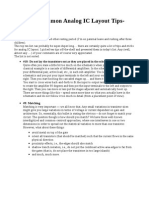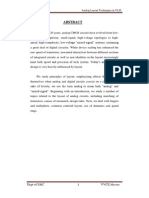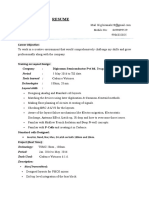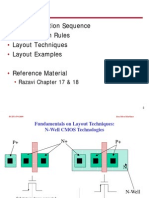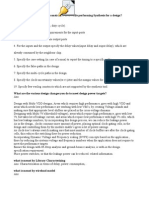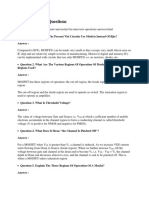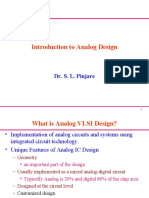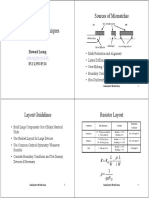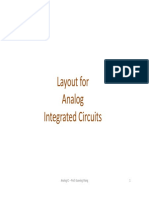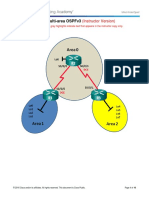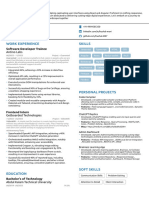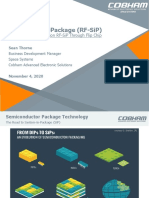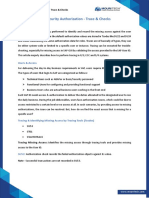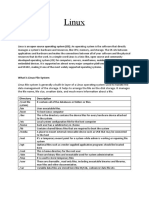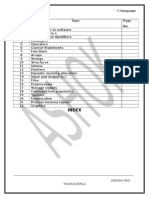0% found this document useful (0 votes)
803 views29 pagesAnalog Layout Interview Questions
The document is an interview guide focused on analog layout design, featuring 50 commonly asked questions from top product companies. It covers essential topics such as latch-up prevention, antenna effects, matching techniques, and the importance of guard rings in analog circuits. Each question provides insights into best practices and troubleshooting methods for various analog layout challenges.
Uploaded by
us1710Copyright
© © All Rights Reserved
We take content rights seriously. If you suspect this is your content, claim it here.
Available Formats
Download as PDF, TXT or read online on Scribd
0% found this document useful (0 votes)
803 views29 pagesAnalog Layout Interview Questions
The document is an interview guide focused on analog layout design, featuring 50 commonly asked questions from top product companies. It covers essential topics such as latch-up prevention, antenna effects, matching techniques, and the importance of guard rings in analog circuits. Each question provides insights into best practices and troubleshooting methods for various analog layout challenges.
Uploaded by
us1710Copyright
© © All Rights Reserved
We take content rights seriously. If you suspect this is your content, claim it here.
Available Formats
Download as PDF, TXT or read online on Scribd
/ 29

